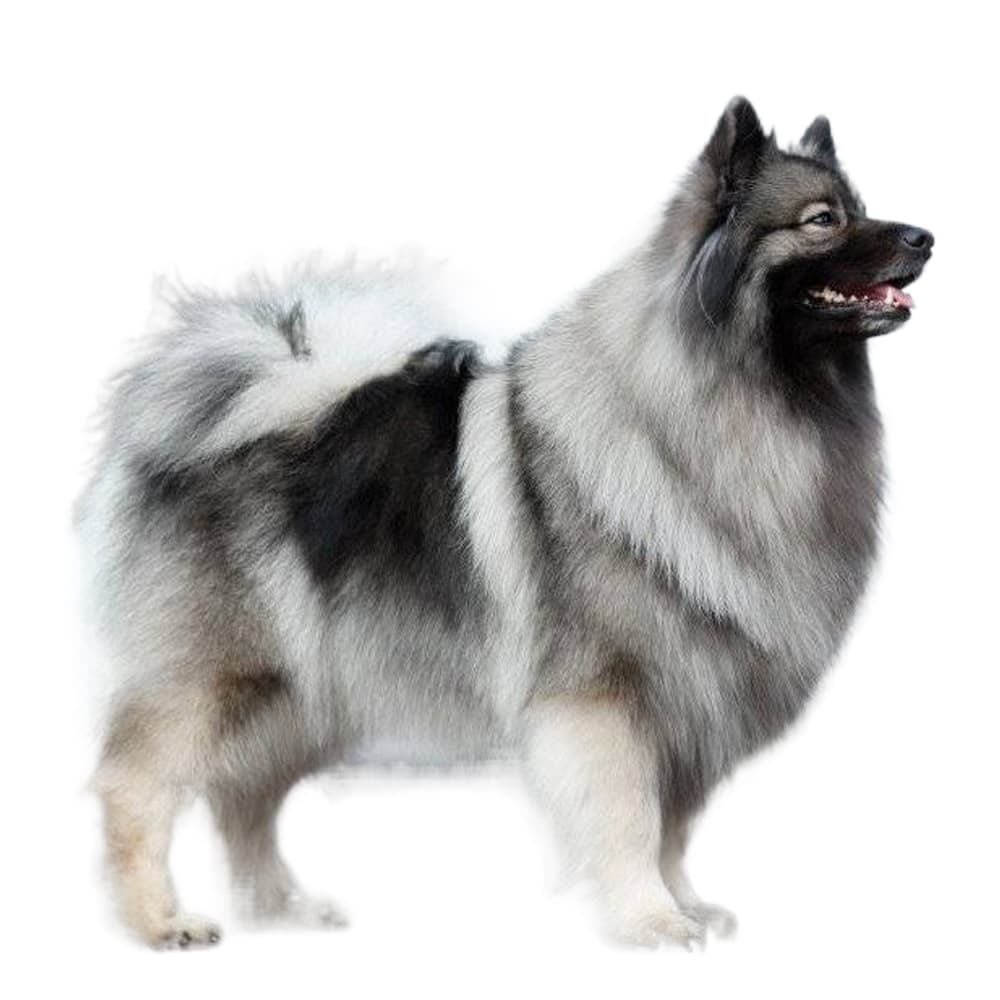Basepaws analyzes this breed as part of a group of other breeds.


Basepaws analyzes this breed as part of a group of other breeds.


Basepaws analyzes this breed as part of a group that also includes German Spitz, Keeshond, Pomeranian.
Despite being distinct in characteristics and origin, some pairs or groups of breeds lack the number of genetic differences required to distinguish these populations from one another, particularly when only a subset of these differences are inherited by a mixed breed dog. As we continue to expand our breed database, we aim to increase the resolution of our ancestry algorithm such that differentiating between increasingly specific ancestral sources becomes possible.

The Keeshond (pronounced "kays-hond") is a medium-sized, fluffy dog breed that originated in the Netherlands and is part of the Spitz family of dogs. They were traditionally used as watchdogs on riverboats, farms, and barges. Also known as the "Dutch Barge Dog," they're a symbol of the Dutch Patriots Party, especially associated with the party leader, Cornelis (Kees) de Gyselaer, from which the name "Keeshond" partially originated. After the party's downfall, the breed fell out of favor for a while but saw a resurgence in the early 20th century.
Keeshonds can suffer from hip dysplasia, degenerative myelopathy, progressive retinal atrophy, and hyperuricosuria. A specific condition for which this breed should also be tested is primary hyperparathyroidism (PHPT). They can also be prone to obesity, diabetes, skin infections, eye and heart conditions, liver issues, bone pain, deafness, and parasitic worm infections. As for all breeds, genetic screening is recommended to assist veterinarians with diagnosis and proactive care, as well as help breeders identify affected and carrier dogs.
Keeshonds are known for their friendly and outgoing nature. They are exceptionally good with children and make excellent family pets. They are intelligent, quick to learn, and eager to please, which makes them relatively easy to train. Keeshonds are also known for being quite vocal, often "talking" to their owners and making their needs and feelings known. They tend to be reserved with strangers but are rarely aggressive. They need a moderate amount of exercise but are equally happy to cuddle on the couch.
A canine genetic lineage is a group of individuals or entire breeds that descended from common ancestors predating modern breed formation. Often these lineages are associated with a ‘type’ of dog with a unique historical working role and associated behaviors (e.g., herding, scent hunting, etc.).
Spitz and Sled Dogs originate in the Arctic and subarctic regions which caused them the develop adaptations to cold climates. Some of these adaptations give rise to characteristics of the lineage, most notably a dense double coat that helps with insulation. The lineage of these dogs can be followed back to ancient breeds developed by Indigenous people. These ancient breeds were used as an aid for transportation, herding, guarding, and hunting. These jobs have created dogs that are independent, intelligent and have strong work ethics as well as a sturdy body that helps them to pull sleds or go on long journeys over rough terrain.
Example breeds with ancestry from this lineage include Akita, Chow Chow, and Siberian Husky.
The Keeshond is considered a Dutch symbol of patriotism. During the political struggle in the 18th century Netherlands, people showed their allegiance to the Patriots Party by owning a Keeshond. The more, the better the commitment!
Keeshonds have a distinctive "spectacles" marking around their eyes, which gives them an alert and intelligent expression.
They have a dense double coat which sheds twice a year, a process often called "blowing the coat." During these times, they can lose an impressive amount of fur.
The plural of Keeshond is "Keeshonden", which follows Dutch grammar rules.
Keeshond is pronounced as “kayz-hawnd”.
https://pets.webmd.com/dogs/what-to-know-about-keeshond
https://www.vet.cornell.edu/animal-health-diagnostic-center/testing/protocols/primary-hyperparathyroidism https://vgl.ucdavis.edu/breed/keeshond?page=1 https://www.pawprintgenetics.com/products/breeds/24/
https://www.akc.org/dog-breeds/keeshond/ https://www.ukcdogs.com/keeshond
Recommended by top vets with decades of experience
21 breeds
64 genetic health markers
50 genetic trait markers
